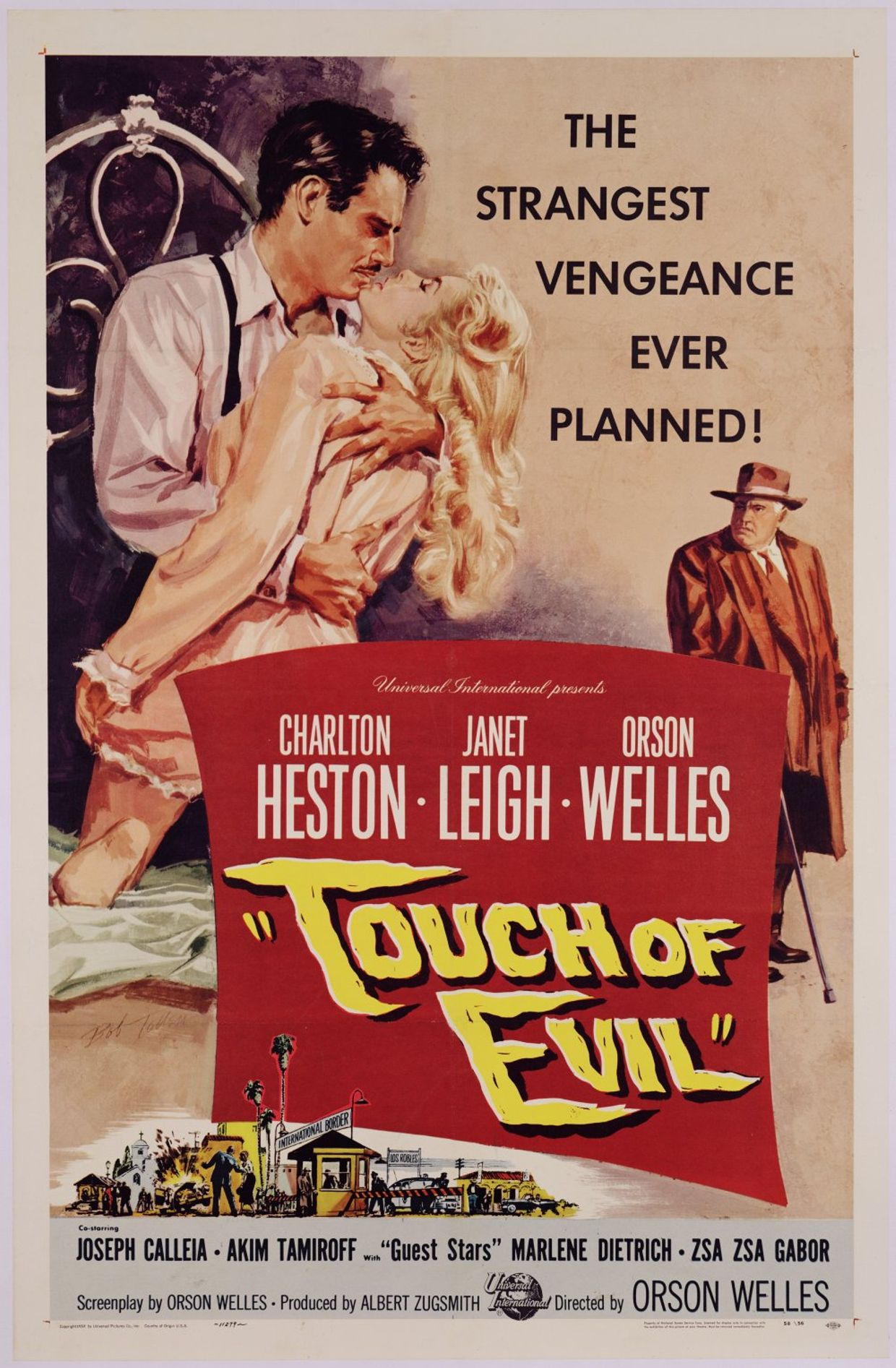Film Review: Touch of Evil (1958)



If you want to get right down to it, Touch of Evil is a ridiculous movie. Charlton Heston plays a Mexican border town drug enforcement agent. Ridiculous. Orson Welles is a corrupt cop who conspires with a drug kingpin’s brother to kidnap and frame Janet Leigh for illegal drug-use—with Marlene Dietrich as the fortune-telling brothel owner who just might love him. Ridiculous. To top it off, the affair concludes under a dirty bridge with a confession resulting from one of the most absurd surveillance operations you’ve ever seen. Ridiculous. Yet, despite all this, Touch of Evil is a noir achievement beyond compare. It’s damn near Shakespearean in its scope and execution. But, with Welles at the wheel and Film Noir racing by in the background, you know you’re in for one hell of a ride.

There are plenty of movies out there that come in nice, neat packages. Most do, in fact. They’re slick, they play by the rules of composition, framing, and dialogue exchange, they conform to genre norms and archetypes and hit all the check-boxes necessary to make a successful film. Touch of Evil, on the other hand, has thrown all expectations out the window, and still comes out fantastic. It’s a film that seems like it could come off the rails at any moment. The chaos of it all is enthralling—half a dozen cops crammed into a small room together, everyone talking over each other, constant movement as they enter and leave rooms—all under the watchful eye of Welles, a certified master, and possible lunatic.

There’s a certain frenzy that comes with this type of story. Things are happening fast, and in multiple locations—from Vargas (Heston) and Quinlan’s (Welles) battle of wits to Susan (Mrs. Vargas, played by Janet Leigh) and her ongoing battle with drug-crazed street hoodlums for hire. The frenetic pacing and dialogue are key to the film’s success. Some directors, with all of this in mind, would still attempt to keep things civil and play by the rules (that nice, neat package I mentioned). Not Welles. He opts for another route—cranking it to eleven and letting loose.

This looseness is what propels what would have been a run-of-the-mill “B” picture into the realm of masterpieces. There is no safety in Welles’s direction, or in the cast’s performances. On the surface, Touch of Evil isn’t anything more than your average murder mystery. Oh, it’s got some twists and turns, sure, but the wildness and boldness of the direction and the chaos of the dialogue are what sells it. Heston, surprisingly, is perhaps at his most human as Vargas, the Mexican drug officer (yes, Charlton Heston plays a Mexican). I wonder how many times Welles had to yell at him to stop using a terrible accent? Welles, on the other hand, is a giant in his role as the corrupt Captain Quinlan. By ’58, Welles had certainly gained weight, but his use of make-up and padding completely transform him into the contemptible cop. Just watch him and listen to the way he interacts with Tanya (Marlene Dietrich). Their conversation isn’t malicious, but it oozes a certain slime that’s nearly undefinable. It’s lecherous, hateful, inappropriate, and sleazy all at once—and they’re mostly just talking about chili.

What’s perhaps most interesting, though, is the film’s political undertones. Touch of Evil subverts the Film Noir mold by reversing stereotypes. Quinlan is respected, trustworthy, dependable, and perhaps most importantly, white—but also the moral bottom of the barrel. Quinlan doesn’t live up to his reputation, but Vargas does. He unquestioningly upholds the qualities of a good policeman, even if the racist border-town cop thinks of him as nothing more than a dirty Mexican. The white cop is morally and professionally corrupt, while the Mexican one is a Boy Scout. I’d say that’s something not typically found in a major film of the 1950s.

A lesser filmmaker would have bombed with the same script—and bombed hard. Welles, of course, is no slouch. He knows how to use cameras and direct actors. He adds a level of panache to an unremarkable story, transforming it into not just a genre-defining film, but one that transcends genre altogether. The opening shot of Touch of Evil should be an indicator as to the level of showmanship you’re about to witness. Pay attention to the whole thing, every detail. This is a film that is most certainly greater than the sum of its parts—and the farthest thing from ridiculous.
